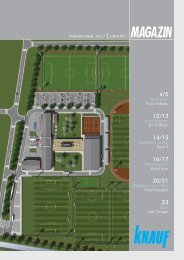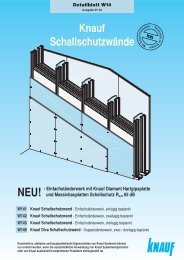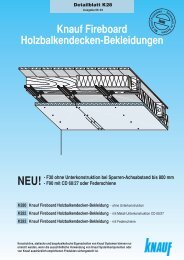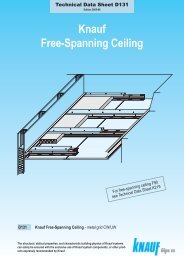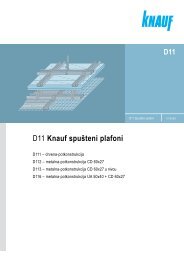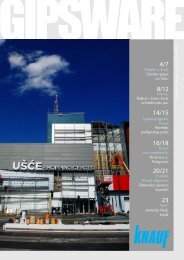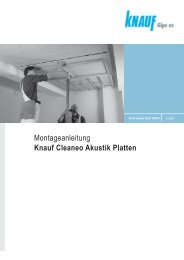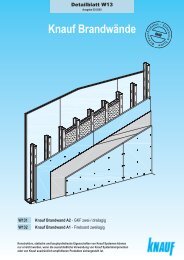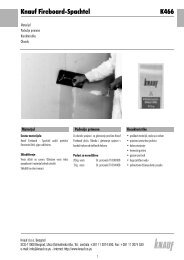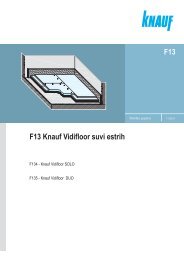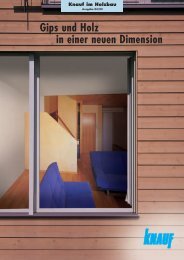Knauf Seismic Design
Knauf Seismic Design
Knauf Seismic Design
You also want an ePaper? Increase the reach of your titles
YUMPU automatically turns print PDFs into web optimized ePapers that Google loves.
Soft Buildings<br />
Advantages:<br />
Appropriate for rigid subsoil (higher<br />
frequency) due to low natural frequency.<br />
Required ductility is easier to achieve.<br />
An easier calculation procedure.<br />
Disadvantages:<br />
Non-load bearing elements have to<br />
be isolated (movements and deformations,<br />
load distributions).<br />
High stress in junctions due to larger<br />
movements.<br />
Rigid Buildings<br />
Advantages:<br />
Appropriate for soft subsoil due to<br />
high natural frequency.<br />
The junctions are less elaborate due<br />
to smaller movements.<br />
Joints with non-load bearing<br />
construction components with fewer<br />
problems.<br />
Disadvantages:<br />
Higher stress when subsoil is rigid.<br />
Lower ductility.<br />
The calculation procedure is more<br />
complex.<br />
a) floor plan vertical layout<br />
Structural Basics<br />
1.) Rigidity of load-bearing structure.<br />
A decision in favor of or against soft or rigid<br />
structures has to take the conditions of<br />
the foundation soil into consideration.<br />
Rigid structures should be founded on<br />
soft subsoil, and soft structures should be<br />
founded on rigid subsoil in order to avoid<br />
undesired large stresses caused by the effects<br />
of resonance.<br />
2.) Ensure a steady and symmetrical distribution<br />
of weight and rigidity in the vertical<br />
and horizontal layout taking non-load bearing<br />
construction components into consideration,<br />
in order to avoid higher torsion-related<br />
stress (fi gure 4).<br />
3.) Avoid “top heaviness” of the vertical layout<br />
related to both weight (including nonload<br />
bearing components) and rigidity. In a<br />
majority of cases, the “soft story effect” is responsible<br />
for the collapse of buildings in the<br />
event of an earthquake (fi gures 2 and 3).<br />
b) floor plan vertical layout<br />
Figure 4: a)Unfavourable layouts b) Improvement through structural subdivision<br />
4.) Use ductile materials for non-load bearing<br />
construction components. Avoid brittle<br />
materials that display unfavorable behavioral<br />
patterns in the case of a collapse (unannounced<br />
collapses, brittle fraction). They<br />
could thus lead to undesired load distribution<br />
when not installed properly, with higher<br />
destruction effects when compared with<br />
more ductile materials (fi gure 5).<br />
The objective should be to implement<br />
these basic rules in the construction of new<br />
buildings as well as in the improvement of<br />
Figure 5: Damage caused by collapsing masonry<br />
existing buildings.<br />
3



